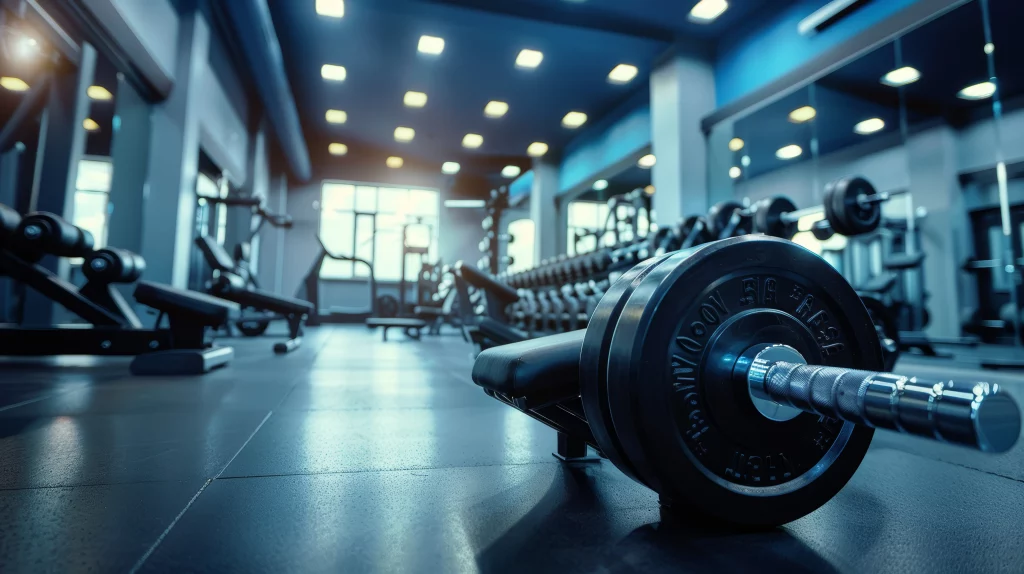The Ultimate Guide to Gym Mat Flooring: Why It Matters and How to Choose the Right One

When it comes to building a gym, whether it’s a commercial fitness center or a home workout space, one of the most overlooked yet critical aspects is gym mat flooring. Most people focus on equipment like dumbbells, treadmills, and resistance machines, but the foundation of any gym—literally and figuratively—is the floor beneath your feet. A good flooring solution ensures safety, protects equipment, enhances performance, and even elevates the look of your workout zone.
Why Gym Mat Flooring is Important
- Safety First
In any gym environment, the risk of injury is ever-present. Slippery or hard surfaces can lead to serious injuries during exercises like weightlifting, jumping, or yoga. Proper gym mat flooring offers a non-slip, cushioned surface that absorbs shock and reduces the impact on joints. This is especially important for high-intensity workouts and strength training. - Equipment Protection
Gym equipment isn’t cheap. Whether you’ve invested in heavy barbells or high-tech cardio machines, you want them to last. Hard flooring surfaces like concrete can damage equipment when dropped. Quality gym mats act as a buffer, minimizing wear and tear on your gear while also dampening the noise. - Noise and Vibration Control
If you’ve ever lived above or below a home gym, you know how noisy a dropped dumbbell can be. Gym mat flooring helps to absorb sound and vibration, making it ideal for both commercial settings and residential buildings. This is particularly beneficial if your gym shares space with other rooms or neighbors. - Hygiene and Cleanliness
Many gym flooring options are made from antimicrobial materials or are easy to clean, which helps in maintaining hygiene. Sweat and dirt can accumulate quickly in a gym setting, so flooring that’s resistant to bacteria and easy to sanitize is a must.
Types of Gym Mat Flooring
There isn’t a one-size-fits-all solution. Different workouts require different flooring materials. Here are some common types:
- Rubber Gym Mats
Rubber is one of the most popular materials for gym flooring. It's durable, water-resistant, and provides excellent shock absorption. Available in tiles, rolls, or interlocking pieces, rubber mats are versatile and suitable for both home and commercial gyms. - Foam Mats
Foam flooring is softer than rubber and is ideal for bodyweight exercises, yoga, or kids' activity areas. They’re usually cheaper but not as durable, so they’re not the best choice for heavy weightlifting zones. - PVC and Vinyl Flooring
These offer a sleek look and are easy to clean. However, they don’t provide the same level of cushioning as rubber or foam. Still, they’re a good option for light workouts or cardio rooms. - Carpet Tiles
Though not as common, carpet tiles are used in some gym settings, especially where aesthetics matter. They offer moderate comfort and sound absorption but are harder to clean than rubber or PVC options.
Choosing the Right Gym Mat Flooring
When selecting the best gym mat flooring, consider the following factors:
- Workout Type: Heavy lifting? Go for thick rubber mats. Doing yoga or stretching? Foam may suffice.
- Location: For garages or basements, water-resistant mats are essential. For multi-level buildings, soundproofing becomes a priority.
- Budget: While rubber mats are more expensive, they offer long-term durability. Foam and vinyl are budget-friendly but may need replacement sooner.
- Ease of Installation: Interlocking mats are DIY-friendly, while rolls or custom installations may require professional help.
- Maintenance: Choose flooring that’s easy to clean, especially if you run a commercial facility.
Installation Tips
Installing gym mat flooring isn’t rocket science, but there are a few tips to keep in mind:
- Measure your space accurately before purchasing.
- Clean and level the surface underneath for better adherence.
- Use adhesives or edging where necessary to prevent mats from shifting.
- Allow mats to acclimate to room temperature for 24–48 hours before installation to avoid warping.
Final Thoughts
Investing in the right gym mat flooring can make or break your fitness experience. From preventing injuries to enhancing workout efficiency and keeping your space looking professional, flooring is a vital component you can’t afford to ignore. Whether you’re setting up a personal gym at home or managing a commercial space, choose flooring that aligns with your fitness goals, space, and budget.
